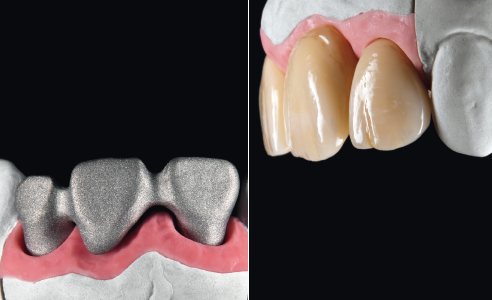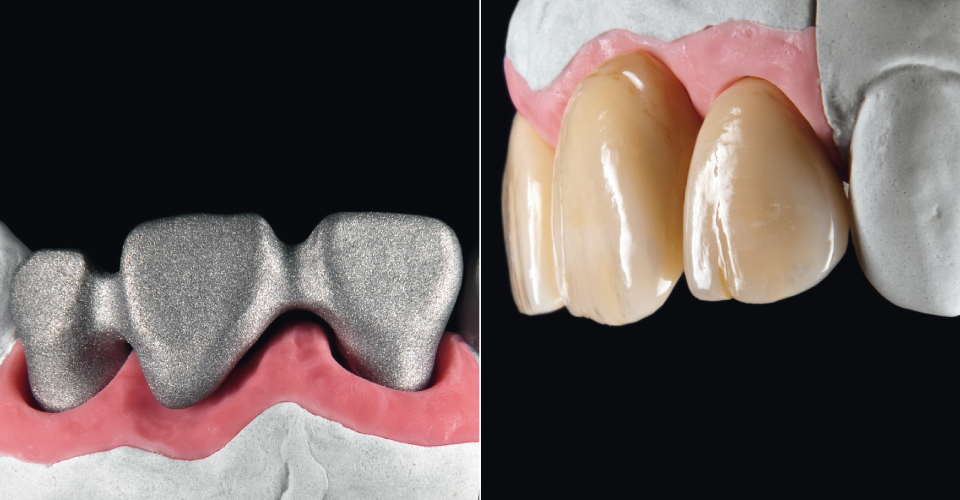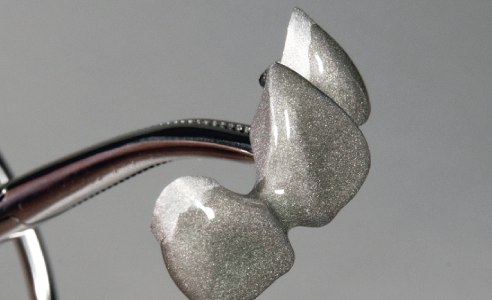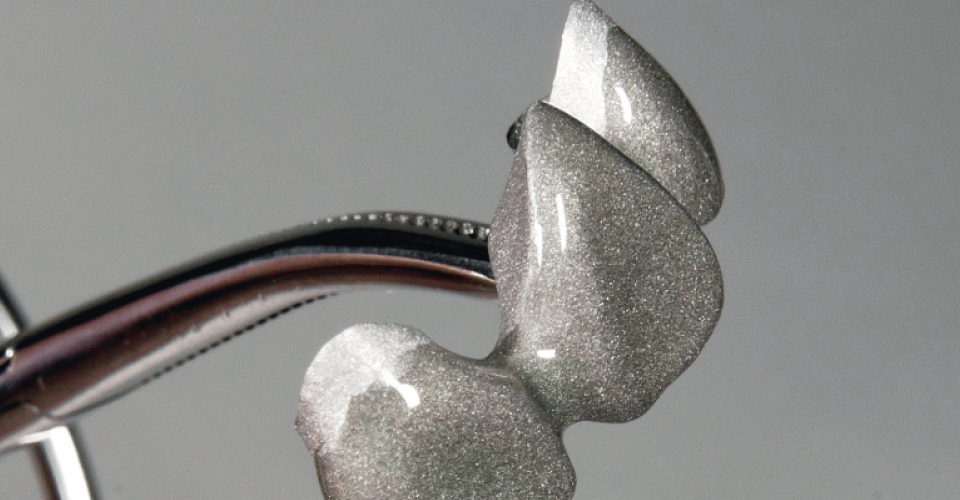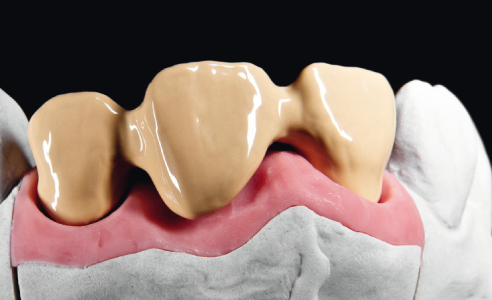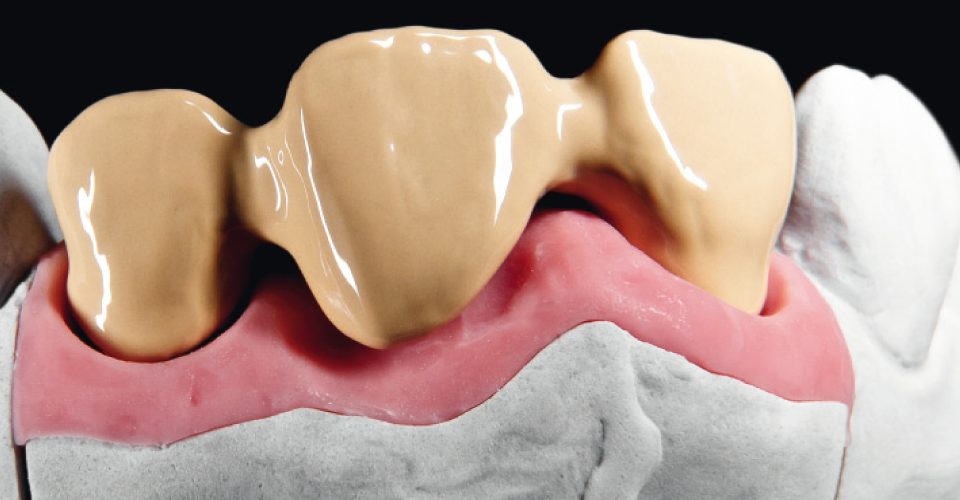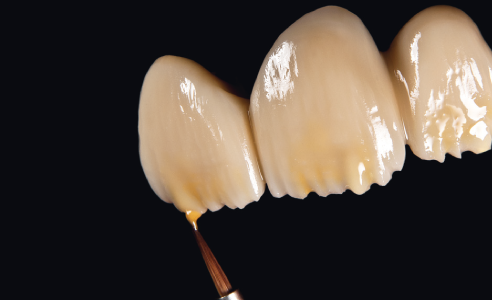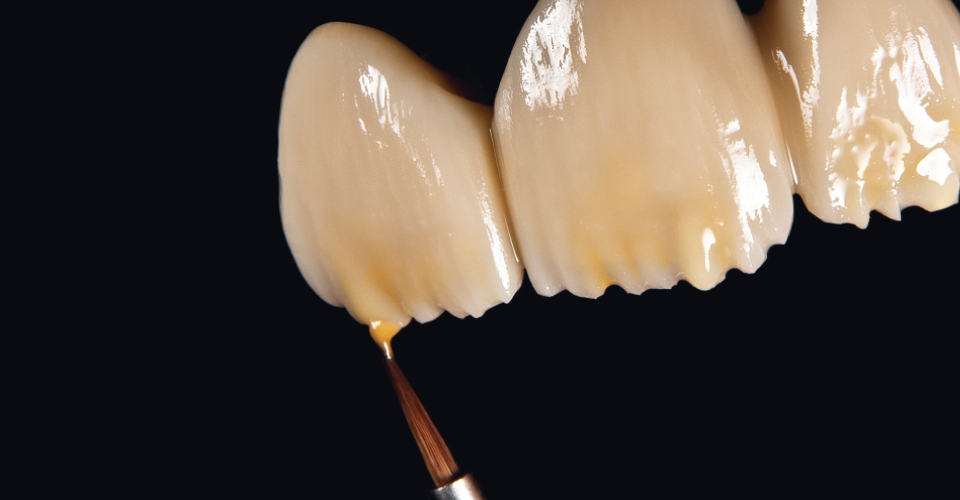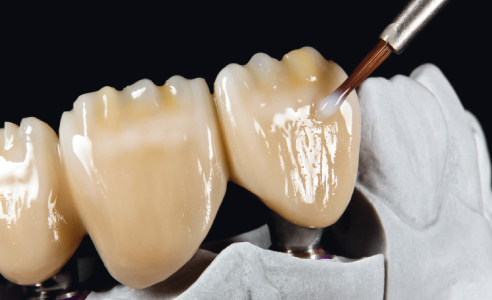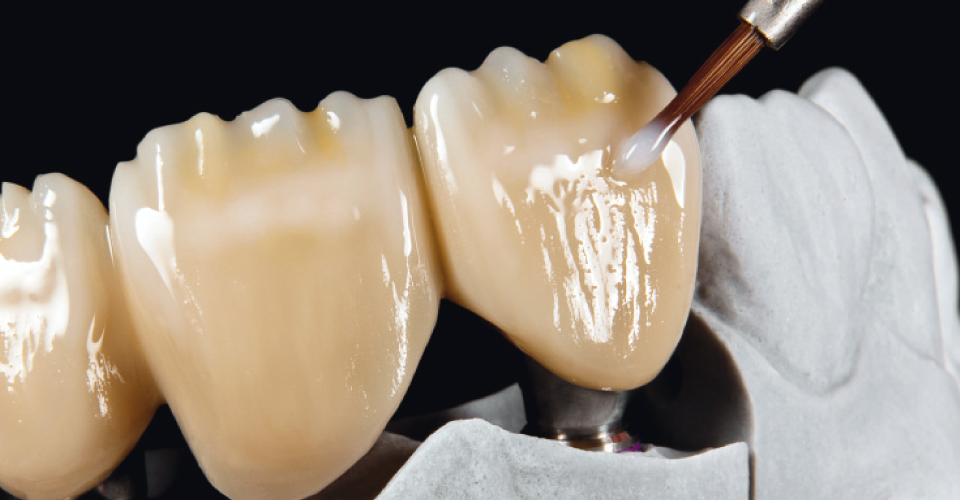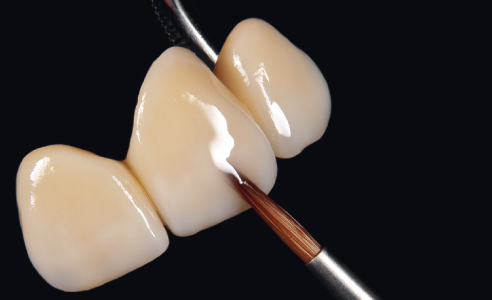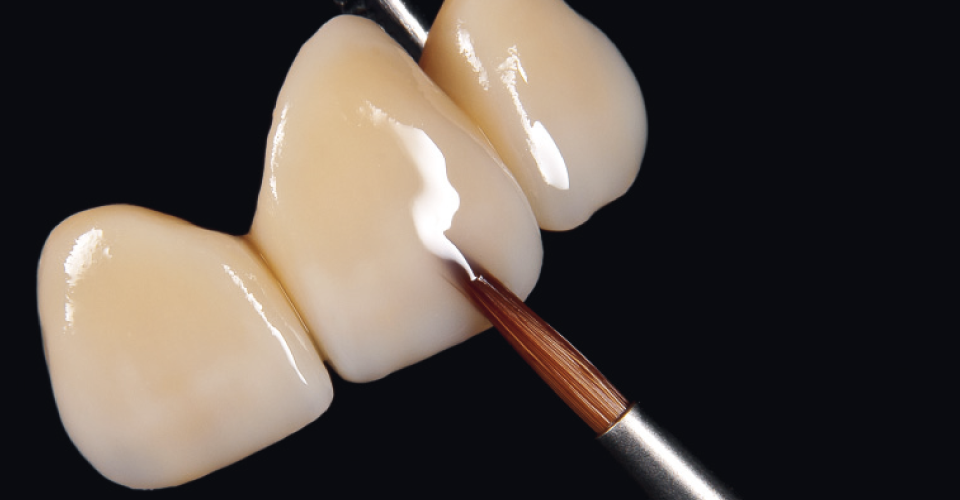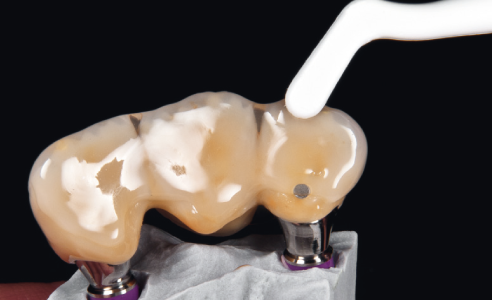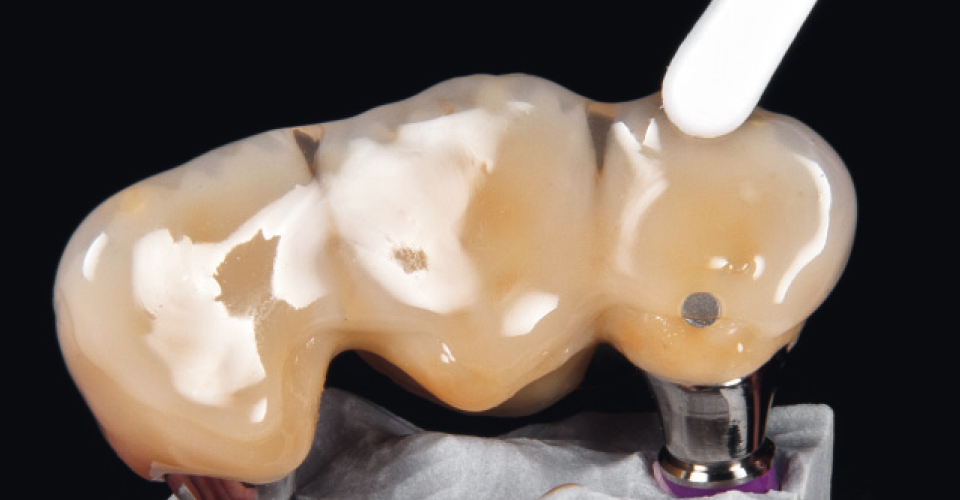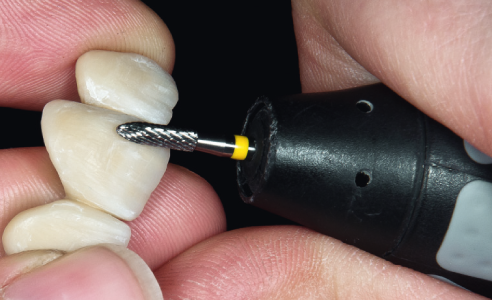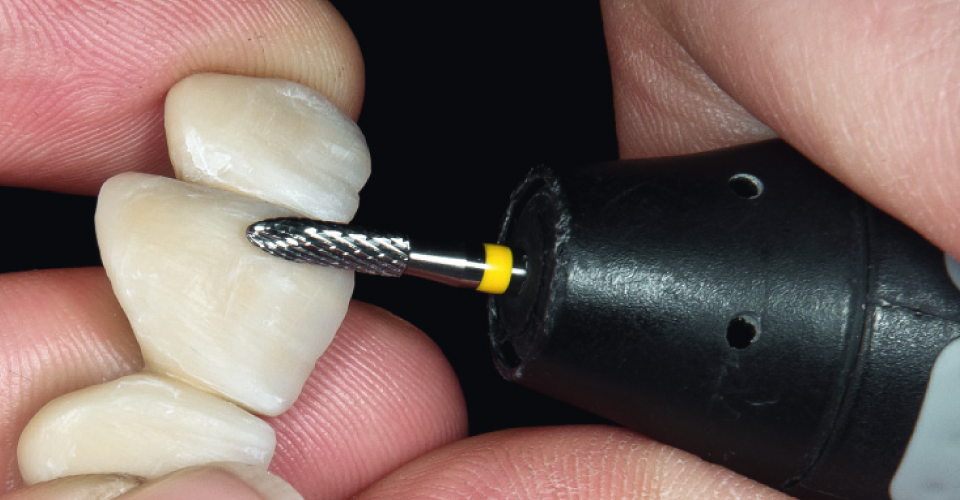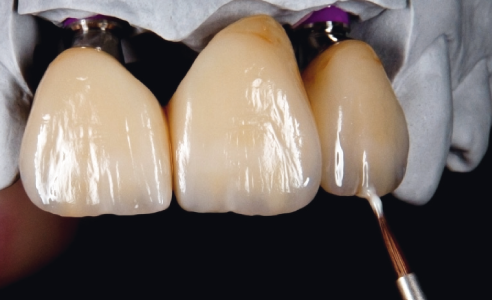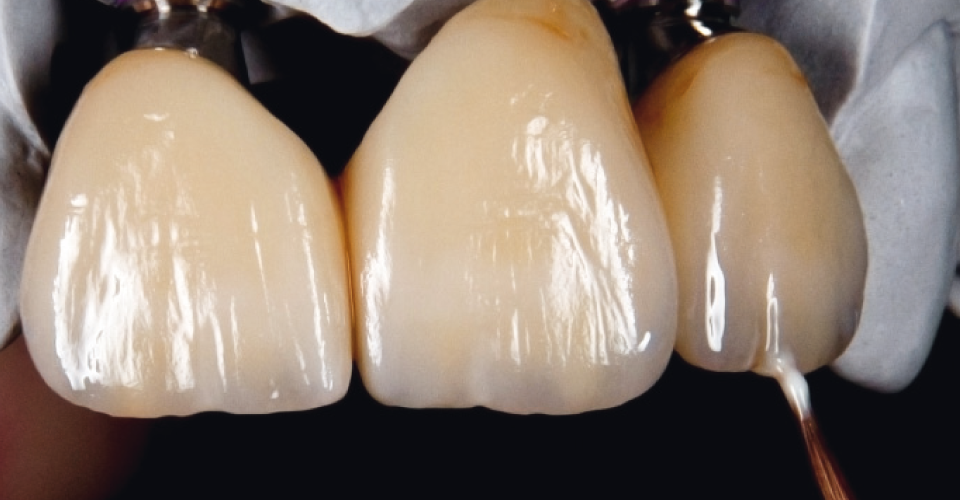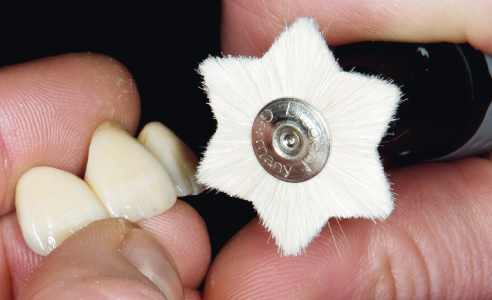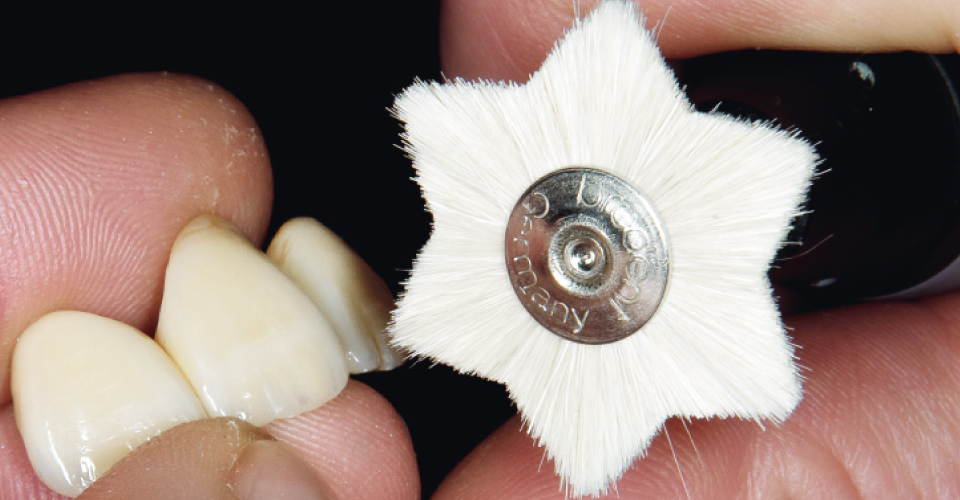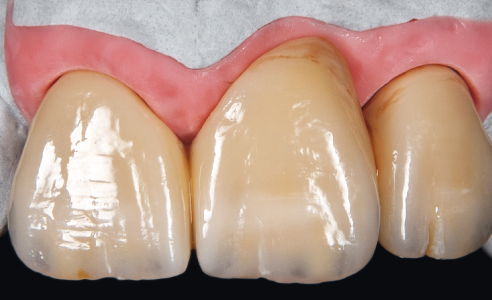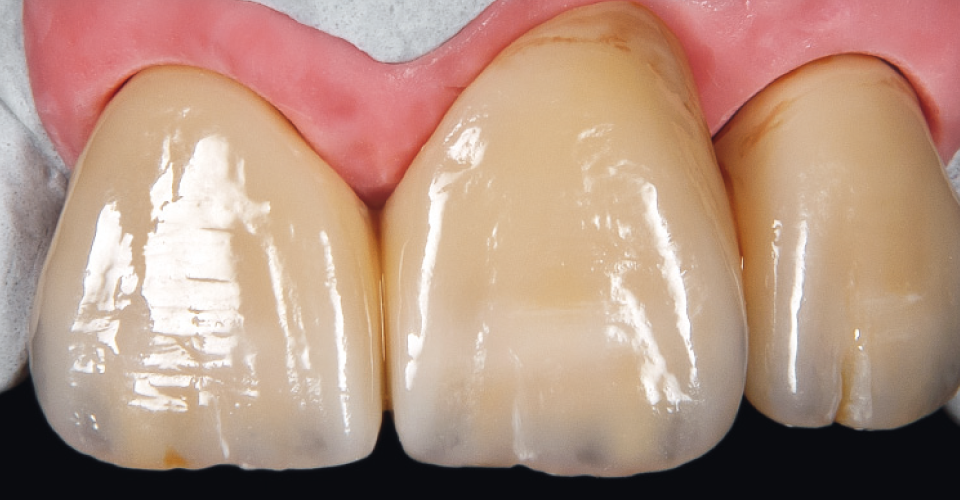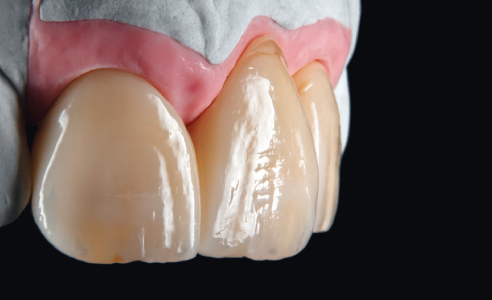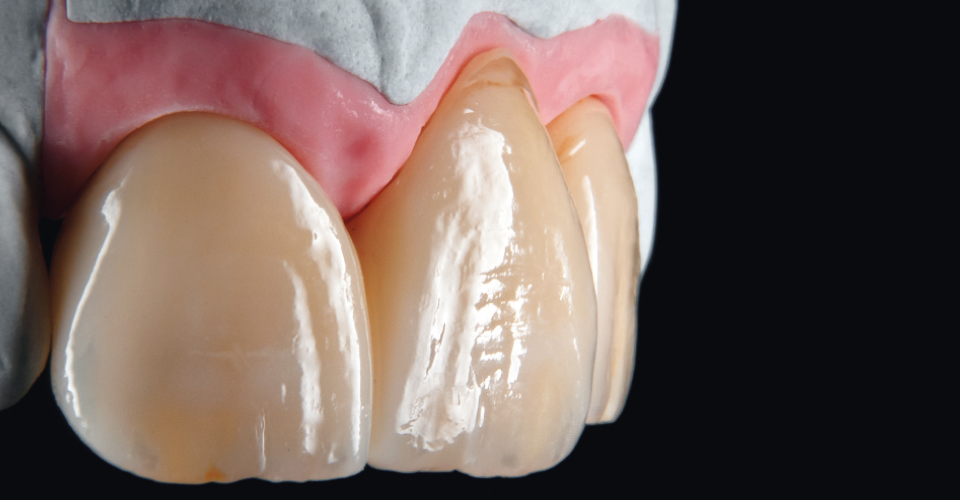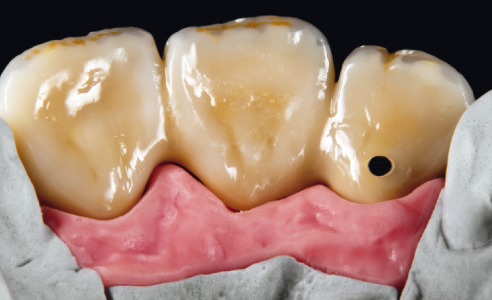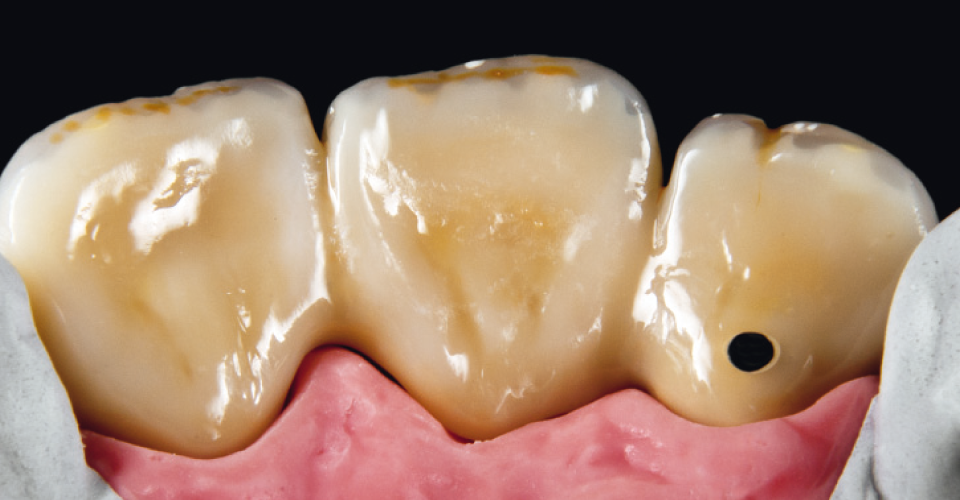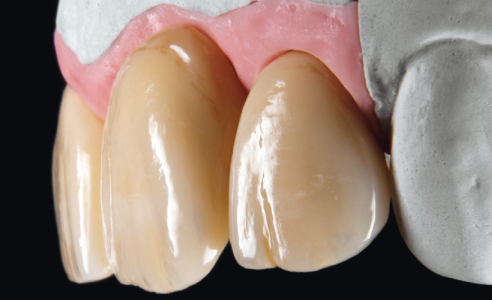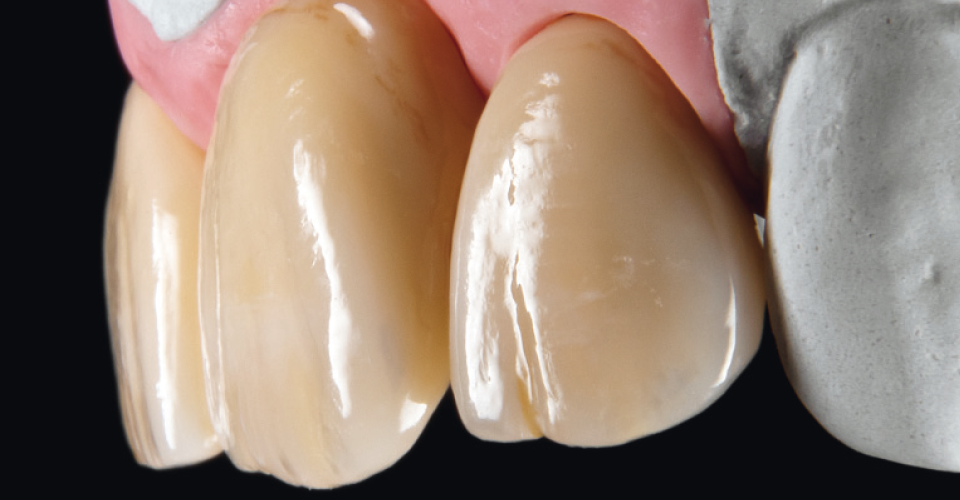Veneering metal frameworks with composite – explained step by step
Veneering metal frameworks and secondary composites have long been regarded as an esthetic and material compromise. However, with modern veneering composites, esthetic results can be obtained that are comparable to ceramic veneers. VITA VM LC flow (VITA Zahnfabrik, Bad Säckingen, Germany) is a composite of this new generation. The thixotropic property of the material offers both high stability during the application, as well as excellent flowability during the modeling process. Erfurt dental technician Norman Zacharias from Das Dentallabor - innovations for your smile (Kirchheim, Germany), shows how VITA VM LC flow can achieve highly esthetic results, step by step in the following article.
1. Concept and preparation
We have been working with VITA VM LC flow since October 2016. The following documentation shows an example of a NEM bridge on two implants, which has been veneered with the veneering composite according to the layer concept of dental technician Björn Czappa. In the first step, the framework was sandblasted and then conditioned using a primer. This was followed by the application of PRE OPAQUE bonding agent, and a thin layer of OPAQUE was then applied until a glossy cover layer was achieved.
2. Veneering steps
CHROMA PLUS materials started to be applied to the tooth necks or the basal section of the pontic. The dentine body was not layered in this case. Instead, a fully anatomic wax-up was created and transferred to the framework using a silicone key, which was completely filled with flow BASE DENTINE. The fully anatomic structure was light-cured and then roughly worked out, in order to reduce the proportions for incisal materials and effect materials. The core of the incision was reinforced with CHROMA PLUS (CP3, light orange-brown) and mamelons were applied. VITA VM LC PAINT (PT5, light orange-brown) was used to add additional accents. Then, with subtle nuances of EFFECT ENAMEL (EE11, grayish translucent), a translucent effect was achieved on the dentine that was already layered, which did not appear dark in the mouth later on. The edges were brightened with EFFECT ENAMEL (EE1, whitish) and a line of Retzius was replicated. Finally, the bridge was finished with melt material (ENL light). VITA VM LC GEL was applied to prevent the inhibition layer before final polymerization.
3. Recommendation for finalization
Fine carbide burs as well as the corresponding rubber polishers, without stones or diamonds, are suitable for the final processing. If additional materials or stains are to be applied afterwards, it is necessary to wet the surface with modeling liquid. Applied stains are thinly coated with transparent material (WIN transparent). For the polish, a goat-hair brush that does not affect the processed surface structure is recommended.
4. Conclusion and experience
"CHROMA PLUS materials have fascinated me from the very beginning. They cover the shades completely without creating a shine and ensure natural depth," Zacharias reports. As a general rule, practical knowledge with the VITA VM system can be transferred 1:1 to the VITA VM LC flow veneer composite. For example, the effect materials are processed in the same way as the VITA VM ceramics. The fully anatomic layer construction using counters works perfectly, even without insulation. “My overall conclusion: Excellent results are easily achieved with VITA VM LC flow," says Zacharias.



